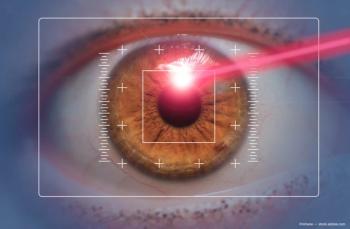
Evolving techniques enhance results with AlphaCor keratoprosthesis
Washington, DC — Accruing experience with the AlphaCor synthetic keratoprosthesis has led to the identification of risk factors for complications along with the development of protective procedures that are enabling better results, said R. Doyle Stulting, MD.
April 18 - Washington, DC - Accruing experience with the AlphaCor synthetic keratoprosthesis has led to the identification of risk factors for complications along with the development of protective procedures that are enabling better results, said R. Doyle Stulting, MD.
The AlphaCor is a 7-mm diameter, one-piece, non-rigid synthetic cornea with a transparent optic for patients at high risk for penetrating keratoplasty.
Speaking on behalf of the AlphaCor Scientific Advisory Board, Dr. Stulting reported results based on data derived from 239 devices implanted by 69 surgeons worldwide. Mean follow-up for the patients was 12.6 months, with a range of 0.5 months to 6.5 years. On average, each patient had failed 2.4 grafts prior to receiving the AlphaCor keratoprosthesis.
Overall, the patients benefited with a mean gain of 2 lines of BCVA as a result of receiving the AlphaCor keratoprosthesis. Considering only eyes receiving the device for an on-label indication and treated with medroxyprogesterone (MPG) postoperatively, the survival rates at 1 and 2 years were 82% and 63%, respectively.
The most common complication was stromal melting. However, its prevalence fell over time from 83% initially to about 12% with the use of MPG and introduction of other management changes, including use of a soft contact lens. Other problems encountered consisted of retroprosthetic membrane development, optic damage, appearance of contact lens-type deposits, and poor primary biointegration. Two eyes developed endophthalmitis and a rhegmatogenous retinal detachment occurred in 1 eye and was thought to be secondary to removal of retroprosthetic membranes.
"Thanks to an evolving surgical technique and developments in postoperative management, reductions in postoperative complications have been achieved. However, long-term data must continue to be collected for better understanding of the benefits and limitations of this technology and where it fits in our practice with relation to human tissue donor grafts," Dr. Stulting said.
Dr. Stulting has no financial interest in the AlphaCor keratoprosthesis.
Newsletter
Don’t miss out—get Ophthalmology Times updates on the latest clinical advancements and expert interviews, straight to your inbox.















































.png)


